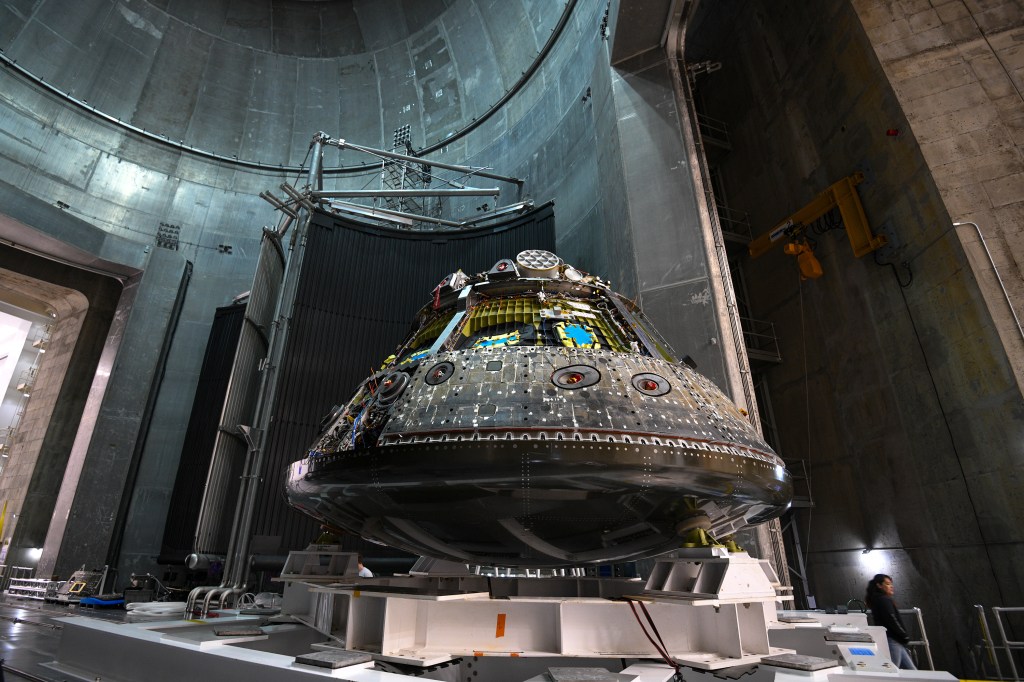STELLA is a handheld gizmo not much bigger than a smartphone, but at the press of a button, it can provide a numerical readout of the overall health of a plant it's pointed at. It may sound like Star Trek’s fictional “tricorder,” but STELLA is a real tool intended for students, educators, and citizen scientists.
On her morning walk to school, a high schooler notices a patch of greenery in her neighbor’s yard. But the plants don’t look quite as green and healthy as she thinks they should. To see if she’s right, she puts down her backpack and pulls out STELLA, a DIY gizmo not much bigger than a smartphone.
She points STELLA at the foliage and, at the press of a button, a small screen displays a numerical readout of a dozen or so measurements – things like temperature, humidity, and light intensity. Like a set of vital signs at an annual checkup, the numbers can help determine the plant’s overall health.
It may sound like Star Trek’s fictional “tricorder,” but STELLA – short for NASA’s Science and Technology Education for Land / Life Assessment – is a real tool intended for students, educators, and citizen scientists. The handheld, do-it-yourself gadget can scan, record, and analyze features of the environment, such as plant health. While not perfectly comparable to the tricorder, STELLA does exhibit some parallels to its distant sci-fi cousin.
For instance, STELLA measurements of leaf temperature and air temperature – and the difference between them – can hint at how well-watered a plant is, said Paul Mirel, chief engineer for the project. Since 2019, the Landsat science project at NASA’s Goddard Space Flight Center in Greenbelt, Maryland, has been supporting Mirel and others in the development of STELLA because it is a valuable tool to demonstrate how the imaging instruments on Landsat satellites work.
Mirel added that the instrument’s light-intensity data can offer a decent proxy for how well a plant is feeding itself through photosynthesis. Healthy plants absorb most of the visible light that hits them and reflect a large portion of near-infrared light. Unhealthy or sparse vegetation reflects more visible light and less of the near-infrared. The ratio between the two is called the NDVI – the normalized difference vegetation index.
Several NASA Earth-observing satellites can help measure NDVI at a global scale, offering valuable data to farmers and foresters assessing the health of their crops and trees, especially in times of drought and heat.

STELLA’s readouts are far more rudimentary than Landsat’s, but replacing satellites isn’t the point. What makes STELLA so valuable is “the ability to hold the instrument in your hand and make those measurements yourselves,” said Earth scientist Allison Leidner, a program manager in NASA’s Earth Science Division who has used STELLA in hands-on demonstrations with astronaut candidates. “It gives you a rough sense of what satellite data look like and how that helps us understand our Earth.”
“STELLA presents a great opportunity to integrate scholarship and education with an instrument that can give us publication-quality data on plant physiology and health at prices affordable to public schools and private individuals,” added Manuel Lerdau, an ecologist at the University of Virginia in Charlottesville. Lerdau and Mirel first conceived of STELLA in 2019 as a device functional enough to measure plant health and simple enough to be built by students.
In fact, two high school interns at NASA Goddard spent the summer of 2023 building 40 of them under the direction of Mirel and STELLA team lead Mike Taylor. Christina Ballagh worked on the circuit boards that hold all the sensors and buttons. “On average it takes two hours to make a whole STELLA,” she noted. Sabrina Pillai worked on the screens. “It’s a ton of soldering, troubleshooting, and cleaning,” she said.
Those newly assembled STELLAs will be loaned out for educational purposes. Taylor has so far mailed them to schools in 10 states, including Alaska, Nebraska, New York, and Tennessee. He has even fielded some interest from American Samoa.
Assembly directions are available freely online from NASA’s Landsat website. There are three different STELLA models, the simplest of which requires neither soldering nor 3D printing and can be taped together on a pair of tongue depressors. Parts for all three models can come in at less than $200.
“The goal here is to democratize instrumentation,” Mirel said.
There is even a STELLA GitHub public forum that offers lesson plans and best practices. Karen Karker, instructional support specialist at SUNY College of Environmental Science and Forestry, used STELLAs in a lesson on the electromagnetic spectrum and found “it’s a really great visual aide for the classroom.”
“Students can use STELLA to understand the world around them, to study the living and the built environment, and to take the steps toward changing the way we treat our planet,” Lerdau said.
Landsat is a joint NASA-U.S. Geological Survey mission that has been studying Earth’s landscapes from space since 1972.
In the STELLA group at NASA’s Goddard Space Flight Center, creator Paul Mirel and team lead Michael Taylor were joined by interns Christina Ballagh and Sabrina Pillai in summer 2023. Further contributors include Ross Walter, who created the free, online data viewer to visualize readouts; lead scientist Petya Campbell, who is assembling a public spectral library with example curves of standard materials; and Jesse Barber, who covers calibration and validation.
By Nora Lowe
NASA’s Goddard Space Flight Center, Greenbelt, Md.




























